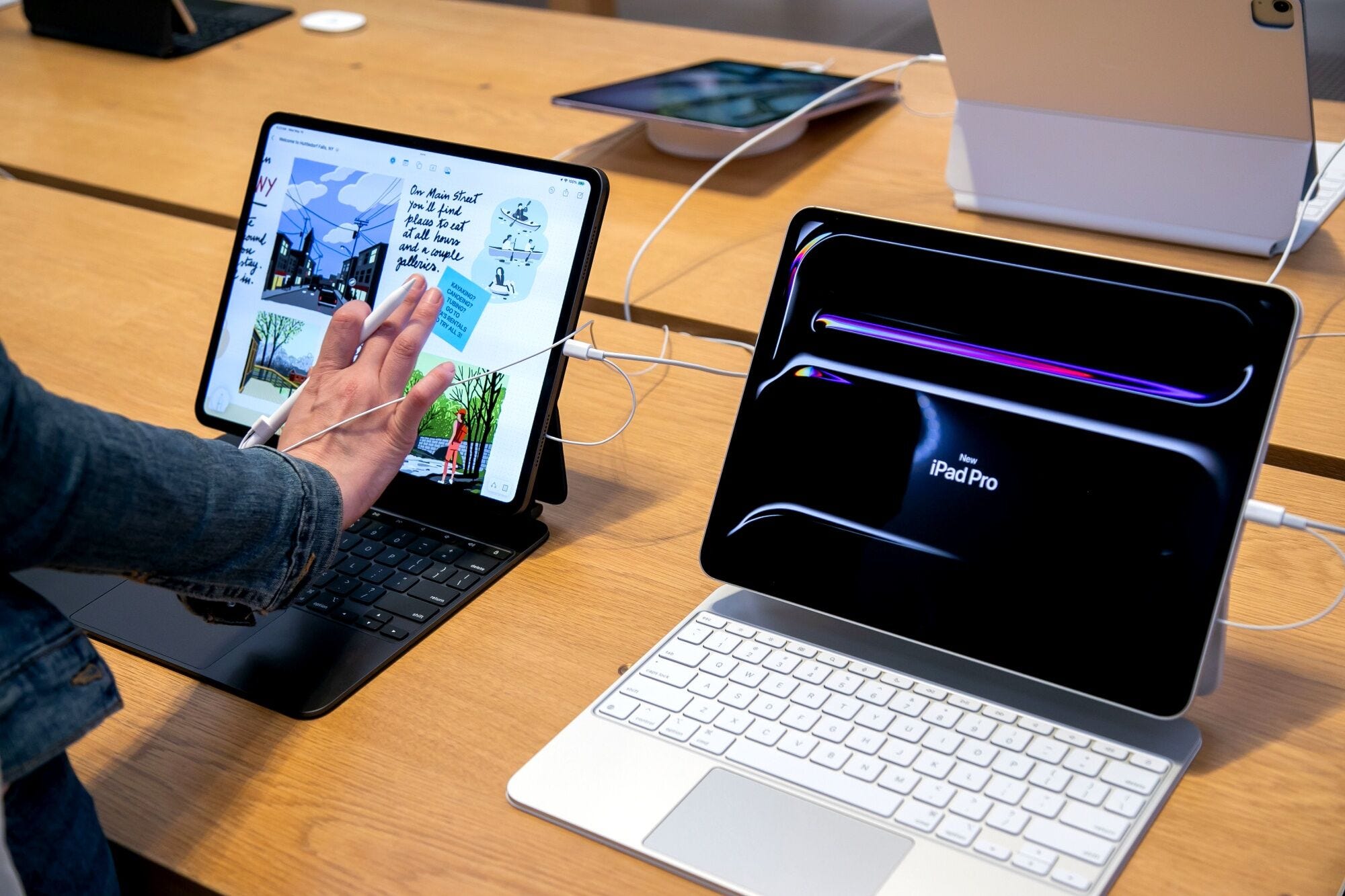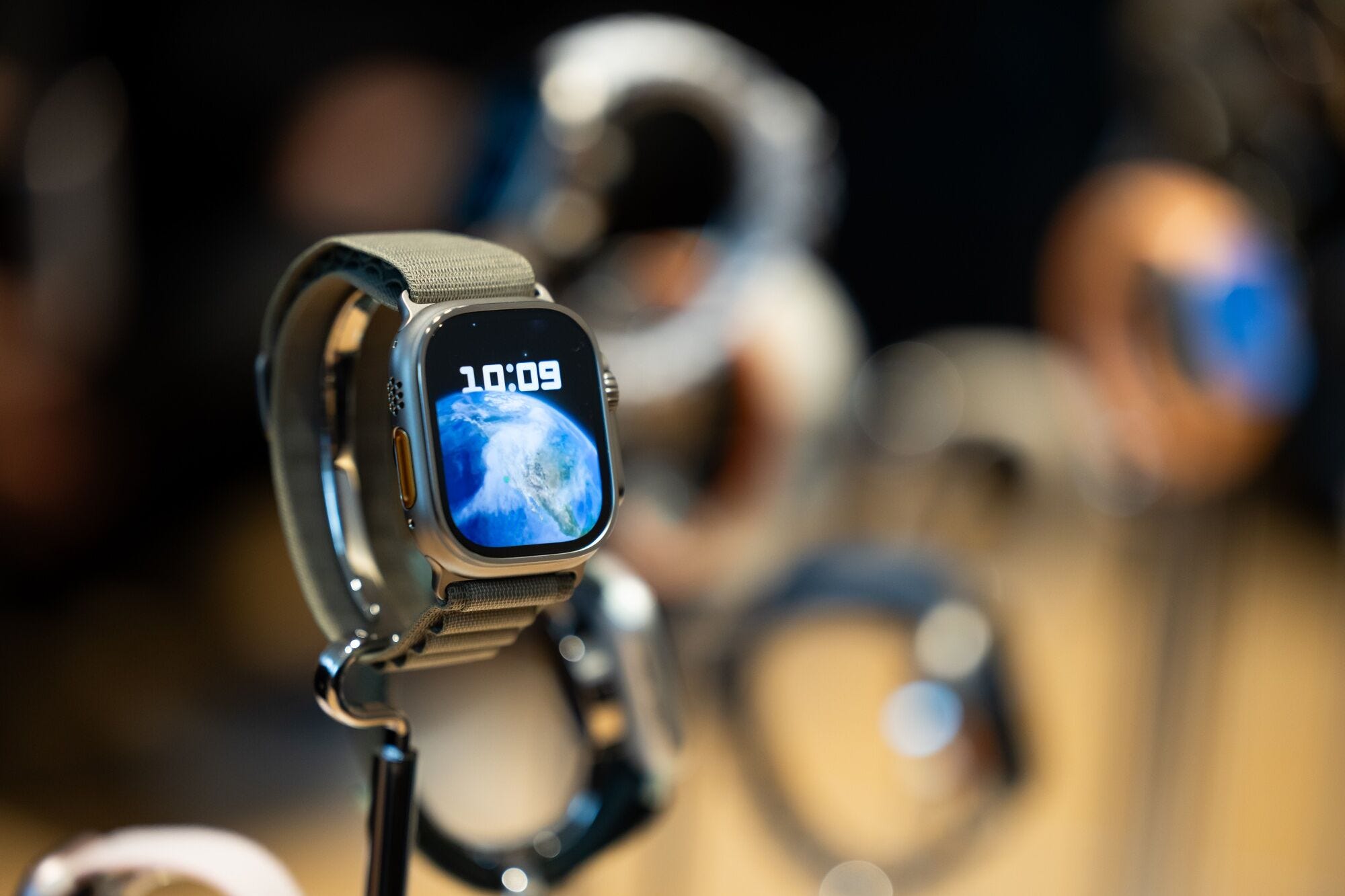Here’s Everything Apple Plans to Show at Its AI-Focused WWDC EventHere’s Everything Apple Plans to Show at Its AI-Focused WWDC Event
The company will introduce ‘Apple Intelligence,’ its long-awaited push into modern AI for the iPhone, iPad and Mac.
June 7, 2024
.jpg?width=1280&auto=webp&quality=95&format=jpg&disable=upscale)
(Bloomberg) -- Apple Inc. isn’t typically the first to embrace new product categories — as it famously showed with its iPhone, smartwatch and Vision Pro. All those areas were established before the company showed up, but Apple found a way to make its mark.
Now it looks to do something similar with artificial intelligence. Nearly two years after the generative AI frenzy started, the company is preparing to lay out its vision for the technology. At its annual Worldwide Developers Conference Monday, Apple will announce plans to deeply integrate AI into its major apps and features — all while reiterating a commitment to privacy and security.
The company’s new AI system will be called Apple Intelligence, and it will come to new versions of the iPhone, iPad and Mac operating systems, according to people familiar with the plans. There also will be a partnership with OpenAI that powers a ChatGPT-like chatbot. And the tech giant is preparing to show new software for the Vision Pro headset, Apple Watch and TV platforms.

Apple’s iPhone 15 Pro models on display. Photographer: Krisztian Bocsi/Bloomberg
The AI features will account for about half of Apple’s WWDC keynote presentation, which starts at 10 a.m. Pacific time and typically runs for roughly two hours. Some of the buzziest features may be ones that don’t focus on AI, such as ones that make the iPhone more customizable and improve the Apple Watch. A company spokesperson declined to comment on the plans.
Here is everything to expect during the keynote address:
AI Features
Apple’s approach to AI will involve integrating the technology into as many of its apps as possible, in ways that ideally ease the daily lives of customers. The company is less focused on whiz-bang technology — like image and video generation — and instead concentrating on features with broad appeal.
The new capabilities will be opt-in, meaning Apple won’t make users adopt them if they don’t want to. The company will also position them as a beta version. The processing requirements of AI will mean that users need an iPhone 15 Pro or one of the models coming out this year. If they’re using iPads or Macs, they’ll need models with an M1 chip at least.
Apple’s AI features will be powered by its own technology and tools from OpenAI. The services will either rely on on-device processing or cloud-based computing, depending on the sophistication of the task at hand. The new operating systems will include an algorithm to determine which approach should be taken for any particular task.
After years of discouraging the use of cloud servers for processing data — and even chastising rivals that did so — Apple risks sparking controversy by using the cloud for AI. So a large part of its announcement will focus on the precautions that the company is taking, including security features on the chips that it’s using in its data centers. Apple also won’t build user profiles based on customer data, and the company will generate reports to show that consumers’ information is secure and not being sold or read. At the same time, Apple will still tout the merits of on-device processing — when available.
A major component of the AI push is summarization. Apple is planning features that can quickly recap articles and web pages in the Safari browser. They’ll also be able to sum up meetings notes, text messages and emails. And Apple is planning a catch-up feature for missed notifications, allowing users to quickly absorb what they missed when they weren’t looking at their phones.
Another part of this is reply suggestions. The iPhone will be able to automatically create fully fleshed-out responses to emails and text messages on behalf of the user.
Siri will be a part of the new AI push as well, with Apple planning a revamp to its voice-control service based on large language models — a core technology behind generative AI. For the first time, Siri users will be able to have precise control over individual features and actions within apps. For instance, people will be able to tell Siri to delete an email, edit a photo or summarize a news article. Over time, Apple will expand this to third-party apps and allow users to string multiple commands together into a single request. These features are unlikely to arrive until next year, however.
Xcode, Apple’s software for developing apps, is getting a big AI infusion too. It will work similarly to Microsoft Corp.’s GitHub Copilot, which can complete code for programmers automatically. Though Apple has already been using this new developer tool internally, it’s unlikely to release it in its full form to third-party developers until next year.
The Mail app is getting a big upgrade as well. It will include a Gmail-like feature that automatically categorizes incoming messages.
One feature that will likely get a lot of attention among Gen Z — and perhaps the rest of the population — will be AI-created emoji. This will use AI to create custom emoji characters on the fly that represent phrases or words as they’re being typed. That means there will be many more options than the ones in the standardized emoji library that has long been built into the iPhone.
Voice Memos will get a much-needed AI infusion, with the company adding the ability to automatically transcribe recordings. That’s a feature that Google Pixel devices and many third-party voice recording apps have had for years.
AI is coming to the Photos app as well, which will embed new capabilities into photo editing. That will make it easier to enhance an image or remove a person or object from the frame.

The iPad Pro on display at an Apple retail store. Photographer: Michael Nagle/Bloomberg
Other Software Upgrades
For decades, Apple’s industrial design team dictated the look and feel of all of the company’s products, ensuring that the software running on devices matched the clean lines and simplicity of the hardware. Now, customers are going to get a bit more say. In the latest iPhone operating system — iOS 18, codenamed Crystal — app icons will no longer have to remain in a neat grid. Instead, users will be able to place icons wherever they choose on their home screen. Moreover, icon colors will be customizable for the first time. That means users could make all their social media apps blue or finance-related icons green. All together, it’s considered to be the biggest upgrade to the home screen in the iPhone’s 17-year history.
Control Center, another core part of the iPhone operating system, will get an updated interface that allows shortcut buttons to be rearranged within the Control Center view itself and placed across multiple pages. It will also have a new music widget and an updated interface for controlling smart home appliances.
The Settings app, which has remained generally unchanged since the first version of the iPhone, is getting updated on iOS, iPadOS and macOS with a focus on improved navigation, better organization and more reliable search.
The Messages app is getting some non-AI tweaks, including a change to the effects feature — the thing that lets you send fireworks and other visual elements to the people you’re texting. Users will now be able to trigger an effect with individual words, rather than the entire message. There will be new colorful icons for Tapbacks, which let you quickly respond to a message with a heart, exclamation point or other character (they’re currently gray). And users will have the ability to Tapback a message with any emoji. There’s another frequently requested feature coming as well: the ability to schedule a message to be sent later. And Apple announced last November that it will be bringing RCS — or rich communication services — to the iPhone later this year, reversing a long-held stance. That will make it easier to share messages with Android users.
Apple is launching a Passwords app for iOS 18, iPadOS 18 and macOS 15 that will offer an alternative to the 1Password and LastPass services. This will essentially be an app version of the company’s long-existing iCloud Keychain feature, which is currently hidden in the Settings app.
The company has revamped the Calculator app and is bringing it to the iPad for the first time. On the iPad and Mac, the app will use the same overall interface — with round buttons — as the existing iPhone version.
Calendar is getting some updates, including the ability to bring in data from the Reminders app. But the two apps aren’t getting combined on iOS or macOS.
The Health app is getting some upgrades, including improved blood pressure data management — in preparation for future Apple Watches to have hypertension detection. There also will be support for a new hearing test feature on Apple’s AirPods. The earbuds are getting a new hearing-aid feature as well, but this may not be announced until later this year. The Health app, meanwhile, will better tailor data, such as cycle tracking, if a person is pregnant.
The watchOS 11 update, codenamed Moonstone, will add an updated Siri interface that uniquely formats responses depending on the type of query. There are also major changes coming to some key apps such as Fitness.
Safari in macOS 15, codenamed Glow, is getting some changes, but it seems unlikely that Apple is going to unveil its own ad blocker — something that’s been reported as a possibility. Advertisers already pushed back heavily against Apple’s App Tracking Transparency, or ATT, in iOS 14 a few years ago, and the company doesn’t need another privacy-related headache.
Apple’s devices are getting new wallpaper packs, including Mac versions that reference old school icons and slogans. The iPhone wallpapers will have options that look similar to early ones on the phone.
The company’s newest product, the Vision Pro, won’t get a major overhaul with visionOS 2 — codenamed Constellation — but the software will include features like new environments, the Passwords app and Vision Pro versions of iPad software. That should make the experience a bit more polished. Overall, the software is more focused on filling in gaps from the first version rather than breaking new ground

An Apple Watch Ultra. Photographer: SeongJoon Cho/Bloomberg
Hardware and What’s Coming Later
WWDC usually focuses on software, but the company has used the conference to unveil devices as well. Last year, Apple showed off the Vision Pro for the first time. But this time, we’re in a lull between releases. The next wave of devices aren’t expected until the fall, so there shouldn’t be any new hardware announcements next week.
Still, the conference will set the stage for what’s to come. The new health features will be fundamental to upgraded Apple Watches in the fall. And the new AirPods enhancements will be core to multiple new models coming later this year. The AI features, meanwhile, should help Apple sell new iPhones and Macs with upgraded chips over the next year and beyond.
About the Author
You May Also Like








.jpg?width=700&auto=webp&quality=80&disable=upscale)
